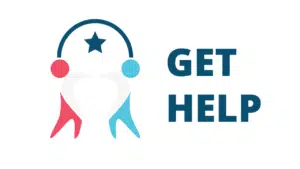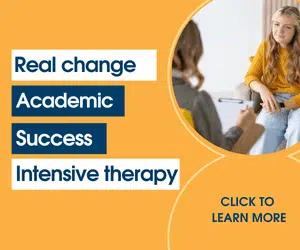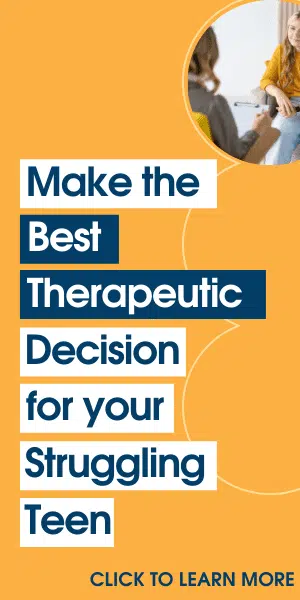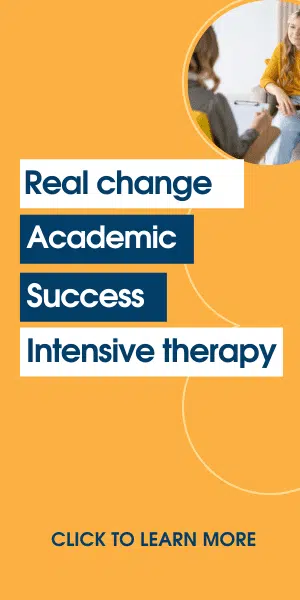Attention-Deficit/Hyperactivity Disorder in Children and Teens: What You Need to Know
Understanding ADHD in Children and Teens: A Comprehensive Guide
Are your kids having trouble focusing on their activities? Do they often act impulsively in ways that seem aggressive or uninformed? If these conditions affect children daily, they may be suffering from ADHD. While ADHD can impact social relationships and school performance, effective management of its symptoms is possible. Find information on the diagnosis and support services for ADHD.
Comparing ADD/ADHD Symptoms in Teens and Younger Children
ADD or ADHD symptoms during adolescence are similar to the symptoms in younger children, but because of their increasing maturity, these symptoms can manifest differently. A smaller child might run circles around the room.
In a teen, the symptoms are more subdued and might be harder to detect. Any inability to control their own impulses or maintain a socially acceptable level of activity during school, church, or other quiet times can be an early indicator of mental disorders. Discover how to identify ADD and ADHD symptoms in teens and young adults.
ADD and ADHD Symptoms
ADD, also known as attention deficit disorder, can sometimes go unnoticed because the ADD symptoms may be less obvious than the ADHD symptoms. ADHD is more often diagnosed in boys than girls. Specifically, 13% of boys are diagnosed with ADHD, whereas only 6% of girls have an ADHD diagnosis.
Girls are more likely to have symptoms of inattentiveness only and are less likely to show disruptive behavior that makes ADHD symptoms more obvious. The symptoms of ADHD in children and teens are distinct and usually noticeable before age 6. They occur in more than one situation, such as at home and at school performance.
How is ADHD diagnosed in children and teens?
For an ADHD diagnosis, a person should display symptoms before the age of 12. The diagnosis of ADHD occurs when a person has experienced a number or more persistent symptoms or symptoms of hyperactivity-impulsivity for at least six months. A symptom of this condition has to occur within two or more settings, often in the family home. Parental advice should be given about the possibility of an ADHD disorder. Diagnosis can be made by your child’s doctor, a mental health professional like a psychologist or psychiatrist, or by a primary care provider like a pediatrician.

ADH Diagnosis
Attention-Deficit/Hyperactivity Disorder (ADHD) in children and teens is characterized by a persistent pattern of inattention and/or hyperactivity-impulsivity that interferes with functioning or development. Family history is important if your child has attention and learning problems. Another consideration is to get vision and hearing checks to be sure something else is not causing similar symptoms of ADHD.
To diagnose ADHD, doctors start by asking about a child’s health, behavior, and activity. They talk with parents and kids about the things they have noticed. Your doctor might ask you to complete checklists about your child’s behavior and might ask you to give your child’s teacher a checklist, too. After gathering this information, doctors diagnose ADHD if it’s evident that A child’s trouble with paying attention, hyperactivity, or impulsivity goes beyond what’s usual for their age.
The symptoms can be categorized into three types: Inattention, Hyperactivity-Impulsivity, and Combined.
Inattention:
Children and teens with ADHD may show signs of inattention in ways such as:
- Difficulty Sustaining Attention: They may have trouble focusing on tasks or play activities.
- Not Listening: Often not seeming to listen when spoken to directly.
- Disorganization: Struggling with organizing tasks and activities.
- Avoidance of Tasks Needing Sustained Mental Effort: This includes schoolwork or homework.
- Losing Things: Frequently losing items needed for tasks and activities.
- Easily Distracted: Being easily sidetracked by unrelated thoughts or stimuli.
- Forgetfulness: Forgetting daily activities, such as chores or errands.
Hyperactivity-Impulsivity:
Symptoms in this category include:
- Fidgeting or Squirming: Unable to stay seated in situations where it is expected.
- Excessive Running or Climbing: Inappropriately running or climbing in situations where it is not suitable.
- Unable to Play Quietly: Often unable to engage quietly in leisure activities.
- Talks Excessively: Excessive talking and interrupting or intruding on others.
- Impatience: Difficulty waiting their turn or interrupting or intruding on others (e.g., butting into conversations).
Combined Type ADHD
For a diagnosis of Combined Type ADHD, children and teens would exhibit characteristics from both inattention and hyperactivity-impulsivity categories. Key aspects include all of the Inattention Symptoms and Hyperactivity-Impulsivity Symptoms.
- Combined Type Symptoms:
- A mix of both inattention and hyperactivity-impulsivity symptoms.
- Need for several symptoms from both categories to be present for a diagnosis.
- Symptoms should be more frequent or severe compared to peers of the same age and developmental level.
- Impact on Daily Life:
- Significant impairment in social, academic, or occupational functioning.
- Symptoms are present in multiple settings, such as home, school, and in social situations.
The severity of the symptoms for all three types can vary and can significantly impair social, academic, or occupational functioning. ADD and ADHD conditions lead to severe suffering and cause serious problems in families, workplaces, and relationships. This behavior is not a result of defiance or a lack of understanding of instructions or tasks.
Being aware of the difficulties and limitations of your teen will allow you to determine if the situation is a symptom of ADHD or simply because he’s not listening. Social symptoms and consequences of ADD and ADHD are also easy to recognize. People tend to get annoyed with teens who can’t control their impulses or activity levels.
When other students are trying to pay attention, the bouncing around and drumming of the one with ADD can be distracting, often testing the patience of teachers and peers. Parents are often at a loss for how to respond. They might wonder if their teens have taken up recreational drugs or how they will ever manage to find success in the workplace or at college.
What causes ADHD?
Researchers don’t know what causes ADHD, but many studies suggest the presence of genes. As with other mental illnesses, ADHD usually reflects multiple environmental factors. Researchers are looking into the potential environment for the onset of ADHD and investigating whether nutrition and social environments play an active role in it.
The Link Between Neurodivergence and ADHD
Neurodivergence is a concept that recognizes and respects differences in brain functioning and behavioral traits as part of the normal variation of the human population. It encompasses a range of conditions, including Attention-Deficit/Hyperactivity Disorder (ADHD), Autism Spectrum Disorder (ASD), Obsessive-Compulsive Disorder (OCD), Dyslexia, Dyscalculia, Dyspraxia, and some Conduct and Mood Disorders, among others. The link between neurodivergence and ADHD is particularly significant as ADHD is one of the most common neurodevelopmental disorders.

Neurodivergence and ADHD:
- Defining Neurodivergence: Neurodivergence refers to a variation in the human brain regarding sociability, learning, attention, mood, and other mental functions. It is an umbrella term that includes a range of neurological differences.
- ADHD as a Neurodivergent Condition: ADHD is characterized by patterns of behavior that include inattention, hyperactivity, and impulsivity. These behaviors, stemming from neurological differences, can significantly impact various aspects of life, including academic achievement, social interactions, and day-to-day functioning.
Impact on Children:
- Academic Challenges: Children with ADHD may struggle with concentration, staying organized, and completing tasks, which can affect their academic performance.
- Social Interactions: Difficulty in controlling impulses and hyperactivity can lead to challenges in forming and maintaining social relationships. Children with ADHD might be perceived as disruptive or intrusive in social settings.
- Emotional Impact: Children with ADHD often experience frustration, low self-esteem, and emotional dysregulation stemming from the challenges they face in daily life.
- Positive Traits: It’s important to note that ADHD can also be associated with creativity, high energy, and the ability to think outside the box.
Brain Differences:
- Neurobiological Basis: ADHD is linked to differences in brain structure and function. Research has shown variations in areas of the brain involved in attention control, executive function, and impulse control.
- Brain Development: Studies indicate that in children with ADHD, certain areas of the brain might mature at a slower rate compared to neurotypical children. This can affect the brain’s executive functions, which are responsible for managing attention, planning, and regulating emotions.
- Neurotransmitter Differences: ADHD is associated with differences in the levels and functioning of certain neurotransmitters, particularly dopamine and norepinephrine, which play key roles in regulating attention and behavior.

Understanding Neurodivergence:
Understanding neurodivergence, particularly in the context of ADHD, is crucial for creating supportive environments that accommodate different learning and behavioral needs. It emphasizes the importance of recognizing and respecting neurological differences rather than viewing them solely as deficits, learning disabilities, or disorders.
This perspective advocates for a more inclusive approach, highlighting the need for tailored educational strategies, therapies, and societal support to help neurodivergent individuals, especially children, thrive in their own unique ways.
Where can I find more information on ADHD?
The CDC, a leading healthcare agency in America, focuses on health prevention and response. The CDC’s website provides a comprehensive resource for parents and health professionals on ADHD and its symptoms.
Psychotherapy and Psychosocial Interventions
Psychosocial intervention has been proven to improve everyday functioning and child health and mental wellness. All therapy for children with ADHD requires parental participation. Psychotherapeutic interventions consisting merely of individualized counseling sessions with children (without parent involvement) are very effective at treating ADHD symptoms. This method of behavioral therapy can be more beneficial in treating the effects of anxiety and depression, which can arise from ADHD. The psychotherapy page at the National Institutes of Health contains detailed information.
Resources for Parents
Understanding Neurodivergent Teens: Challenges and Solutions
What are the Best ADHD Treatments
Conduct Disorder in Teenagers with ADHD: Innovative Approaches for Effective Treatment
Best Parenting Tips for Parents with ADD ADHD Children and Teens















